Watching old movies, I often latch onto a scene that pulls me back to the year that the film was made with both a realization that the artifacts contained within the scene were of-the-time, and an amazement that they are easily find-able now with the Internet. I’d had almost-success finding a dive bar called The Moonfire Inn from MST3K’s riff on The Hellcats (1968), and even if the abandoned old building I found on Google Street View wasn’t it, I learned a lot about the the place’s cultural proximity to both a Paul Newman movie and the Manson Family. Since movies aren’t real, this fascination with old movie artifacts as historical documents can be a bit of a degraded version of the (more understandable) fascination with long-distant history as we walk through ancient ruins. Here though, as with the Hellcats biker bar, the artifacts are real and are not, say, the prop of a Maltese falcon.
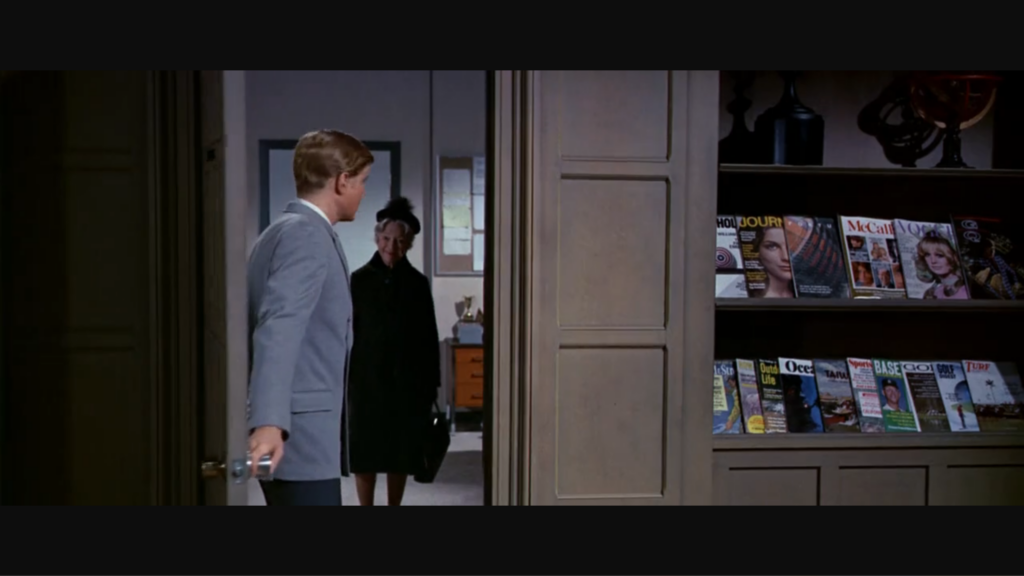
I collect and read the book series The Best American Essays and have 1996 through 2010 (many not read, most that were read were very much worth it, years not purchased are sure to be acquired during some future purchasing jag). One [ed. find the source of this] was by an author who picked a library shelf and read every book from it. Her choice, perhaps random?, was the L’s. In the essay, she describes the stories from each book and one stood out to me: Lisa Lerner’s Just Like Beauty. The books is set in some weird future/alternate history where the young female protagonist must learn complex chemical equations to qualify for a beauty pageant. It’s much more than that, but that’s the gist. Recommended.
In a recent article from Prospect magazine titled Meet the archive moles, the author wrote about people who are tasked with finding out-of-print books that deserve to be in-print and who then must hunt down the copyright owners, usuallyt family. It’s a fascinating deep dive into the lit world and though much different than the essay above and my obsession below, seems similar.
Some random Internet article brought up the movie Airport recently and I realized I knew of it but didn’t know it. dailymotion has a very good copy streaming, so I watched that. Next up for viewing are the other three in the series, but that’s another story… Until then, I have to know what the magazines were from the scene where the “old biddy” is brought into the airport manager’s office.
Those magazines on the right of the image are mostly find-able simply based on the year of the movie, which though it was released in 1970, was filmed from 31 Jan 1969 to Jun 1969. So not only can we track down the magazines, we can also determine when the scene was filmed.
Table of Contents
Top shelf
Top shelf, from left to right:
???
With the first one of the top shelf eluding my search (though the only one on this shelf that has) this not a good start. I searched the List of United States magazines along with the List of defunct American magazines for the letters “HOL” with no luck.
A few seconds earlier in the scene, we get a better shot and can see that the “HOL” is the beginning of a word, which helps. But doesn’t.
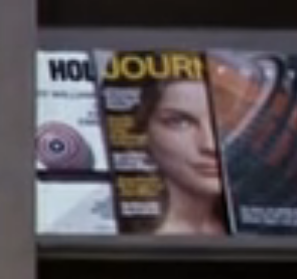
I take the loss on this one for now.
Ladies’ Home Journal, Mar 1969
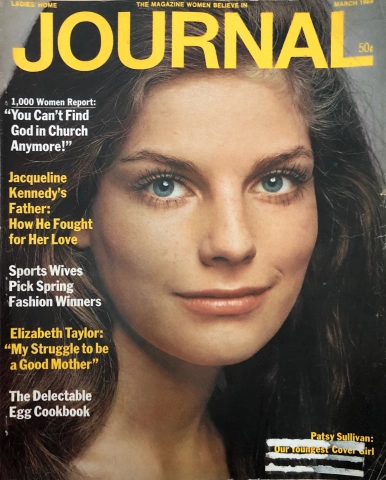
- 1,000 Women Report: “You Can’t Find God in Church Anymore!”
- Jacqueline Kennedy’s Father: How He Fought for Her Love
- Sports Wives Pick Spring Fashion Winners
- Elizabeth Taylor: “My Struggle to be a Good Mother”
- The Delectable Egg Cookbook
- Patsy Sullivan: Our Youngest Cover Girl
I doubt the “God” article would pass a non-churchy publication today, and the idea of an egg cookbook screams 1970s (or, thereabouts), but you could replace the names in the rest of the stories and they could be in any entertainment/fashion magazine today. That Breck Girl on the cover, Patsy Sullivan, was a model and the wife of the famous songwriter Jimmy Webb (“By the Time I Get to Phoenix”, “Wichita Lineman”, “Galveston”, etc.). Their meeting was very Jerry Lee Lewis-ish.
Nixon became president in January, prior to that was Lyndon B. Johnson, and before him Kennedy. The Jacqueline Kennedy article is like if LHJ today published an article on Michelle Obama. Not unexpected.
Elizabeth Taylor at the time was beginning to become out-of- and old-fashion(ed) and so the article places the magazine as a kind of more conservative house-wifey type publication. Checks out.
Fortune, Mar 1969
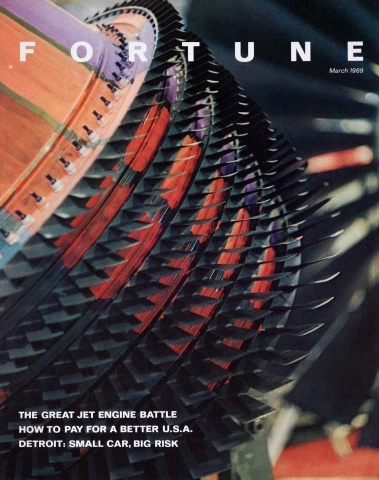
- The Great Jet Engine Battle
- How to Pay for a Better U.S.A.
- Detroit: Small Car, Big Risk
Oh that capitalist fear of producing small cars. Definitely pre-1990s. Someone on eBay is selling a copy ($40) and they’ve uploaded 10 scans of several articles and ads. I can smell the old paper just looking at them.
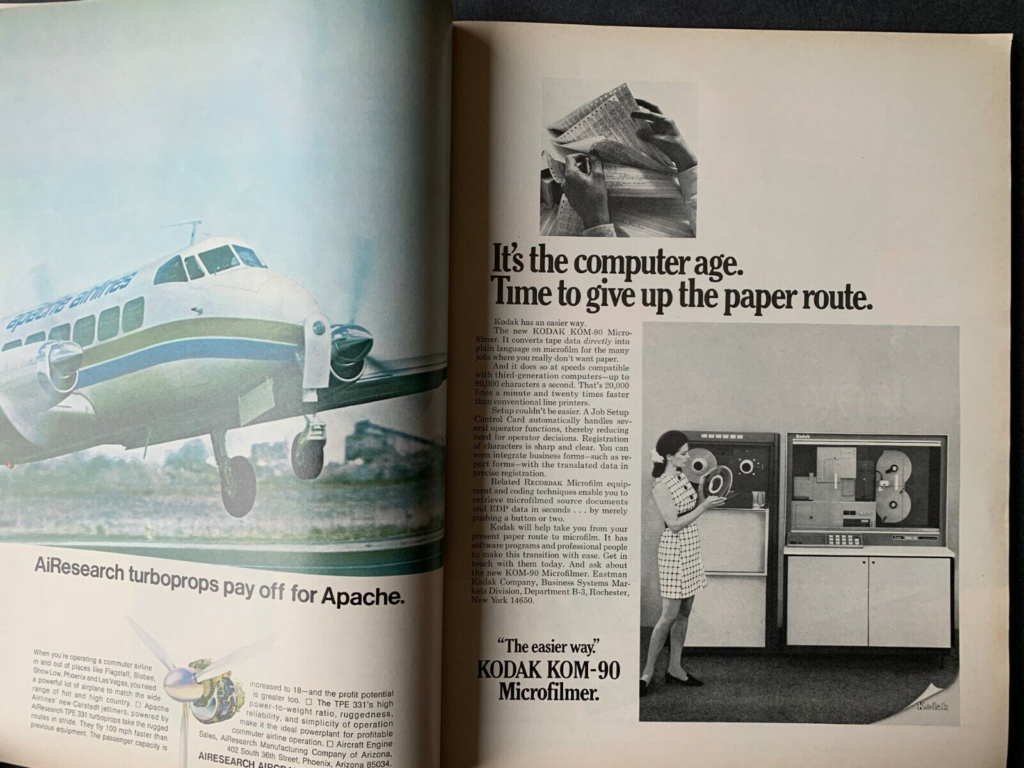
McCall’s, Mar 1969
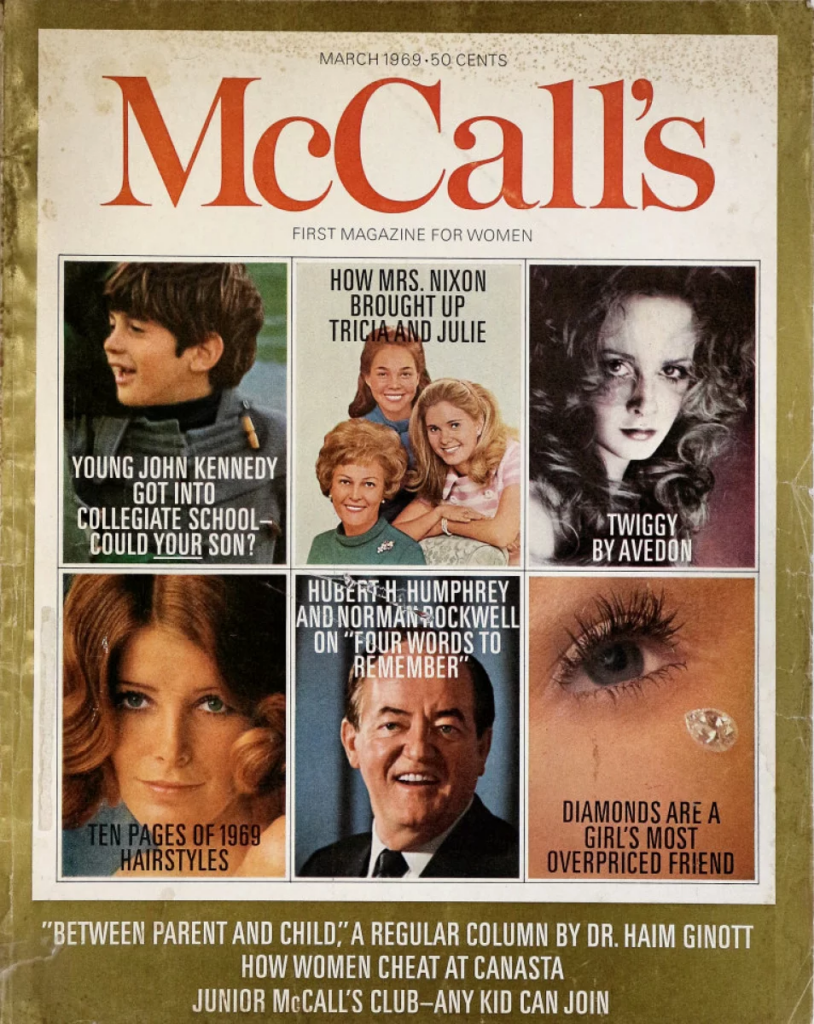
- Young John Kennedy Got into Collegiate School–Could Your Son?
- How Mrs. Nixon Brought Up Tricia and Julie
- Twiggy by Avedon
- Ten Pages of 1969 Hairstyles
- Hubert H. Humphrey and Norman Rockwell on “Four Words to Remember”
- Diamonds are a Girl’s Most Overpriced Friend
- “Between Parent and Child,” A Regular Column by Dr. Haim Ginott
- How Women Cheat at Canasta
- Junior McCall’s Club–Any Kid Can Join
The John Kennedy article echoes the one about Jacqueline Kennedy in Ladies Home Journal above: a continued fascination with Camelot.
This came out a couple of months after Humphries left office as Vice President, so it’s likely a “my thoughts on the Vice Presidency” type of article. Stepping in as President, replacing Lyndon B. Johnson, is Nixon, so the Mrs. Nixon article is a “get to know me as a First Lady” one. 1969 was a changing of the guard year.
Dr. Haim Ginott was apparently influential in defining how educators communicate with children.
An article on the game Canasta (“Interest in the game began to wane there during the 1960s”). Classic. I feel like this is what they would play on Bewitched. Even with this oddity, I’m still surprised at the… timeless Mad Libs that these magazines are.
Vogue, 1 Mar 1969
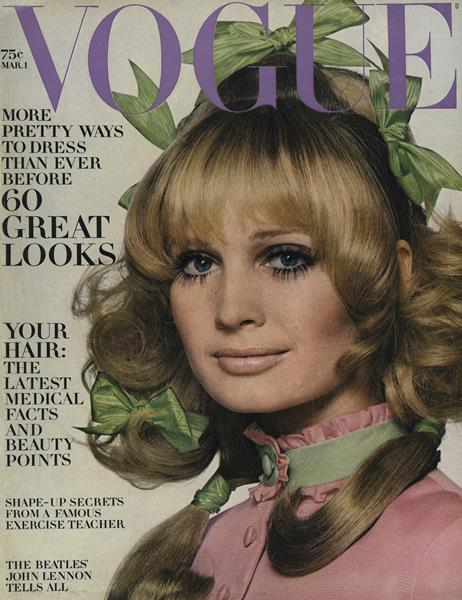
- More Pretty Ways to Dress Than Ever Before, 60 Great Looks
- Your Hair: The Latest Medical Facts and Beauty Points
- Shape-Up Secrets from a Famous Exercise Teacher
- The Beatles’ John Lennon Tells All
I recognized the cover model but had to look her up… no luck with reverse image search except for many other Vogue covers… aha, eBay is selling several copies going for anywhere from $50 to $150. Candice Bergen by (as with the McCall’s spread of Twiggy) Richard Avedon.
GQ, 1 Mar 1969
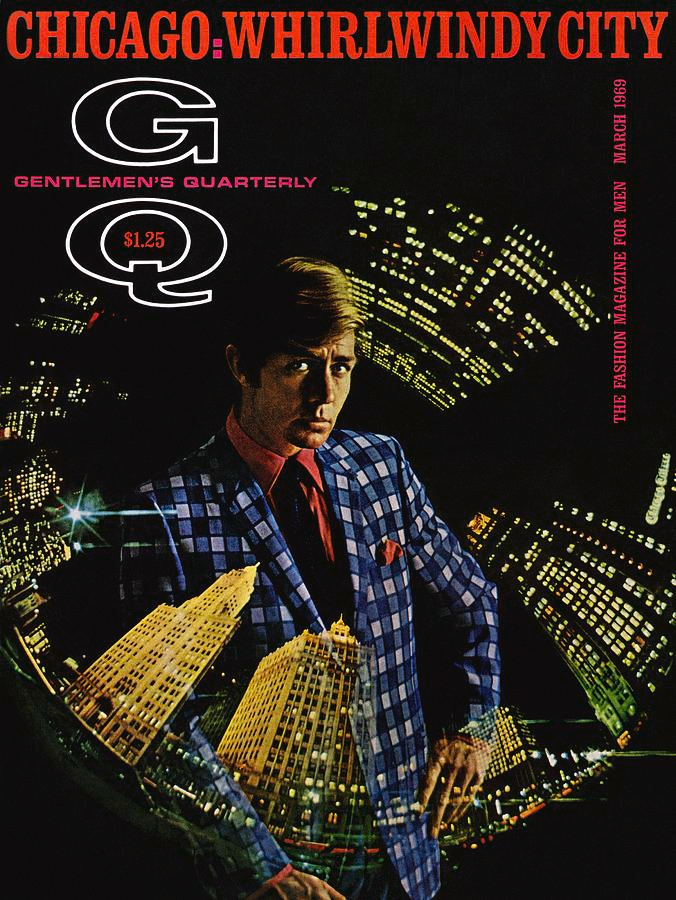
Maybe my interest in these magazines as I watched the Airport scene isn’t so odd, because these are crazy prices just for old magazines (or prints, as in this instance). $100-$200?!